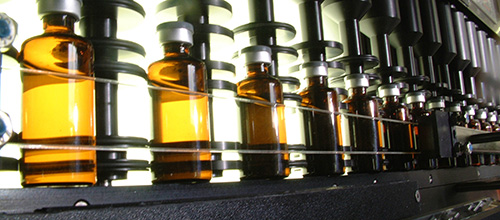European Pharmacopoeia: New Chapter on Visual Inspection for Visible Particles
Recommendation

Thursday, 12 February 2026 9 .00 - 17.00 h
The EDQM has elaborated a new chapter on testing of parenterals for visible, particulate contamination - as you could already read in New Ph. Eur. Developments in the Visual Inspection of Injectables. The new chapter is of advisory nature. Indeed, it is entitled "Recommendations on testing of particulate contamination: visible particles". It has now been officially published for comments in Pharmeuropa 30.4. The requirements for the test methods used for the test on visible particles can still be found in the mandatory chapter 2.9.20. Particulate contamination: visible particles.
The new chapter differentiates extrinsic particles from intrinsic ones. The firsts are impurities from the environment, equipment or packaging like for example hair, fibres or glass. The latter are impurities from the formulation, the product or the excipients themselves, or the process such as proteinaceous particles, silicone droplets, or inorganic precipitates. Both types of particles should be avoided. However, it is indicated that the particle may be the product itself in some medicines (like in cell therapy or dispersions).
Besides, it is pointed out that some products may be difficult to visually inspect because of their nature like for example opalescent, coloured or opaque solutions, or lyophilisates too. In such cases, measures should be taken to improve the detection rates. They include - among other things - extended inspection times to more than 5 s against both black and white backgrounds, or the use of light intensities higher than 3750 lux (as described in chapter 2.9.20).
For the first time, the Ph.Eur. speaks of an additional AQL testing with regard to ISO standard 2859-1 in the context of a 100 per cent inspection. This testing should confirm that the 100 per cent inspection has been performed correctly and that all containers with particles have been eliminated. According to the EDQM, different AQL levels should be defined, for example for minor, major or critical defects.
In addition, according to the new chapter it is possible to omit an additional quality control test for particles in the context of the batch release, if both the 100 per cent inspection performed during production (manual or automatic) and the AQL testing were successful. This doesn't apply to lyophilisates where additional samples have to be reconstituted and tested.
Yet, the new chapter states that although the objective is zero particle pro container, this is in reality not realistic because visual inspection is probabilistic in nature. No general recommendation is given on that.
The new draft chapter is in compliance with the Best Practice Guidance document of the ECA Visual Inspection Group.
The new chapter is freely available on the EDQM website under "Texts for comment" after registration (for free).




